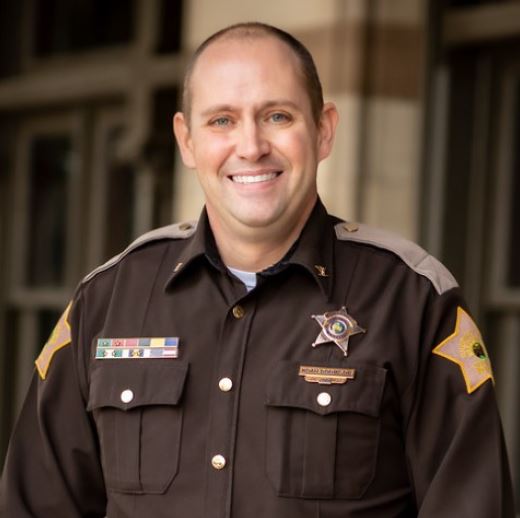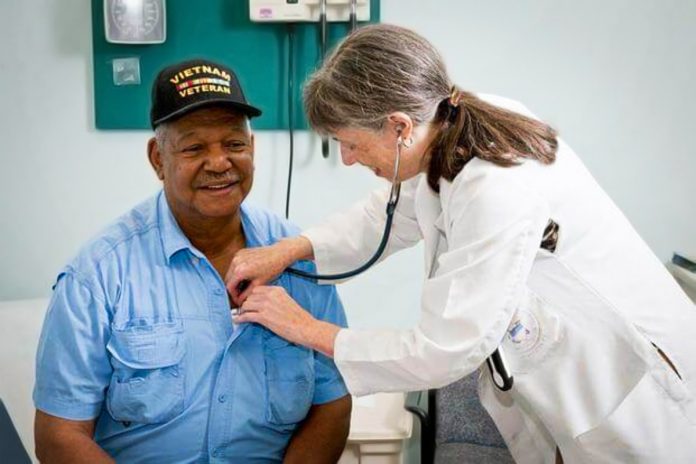VINCENNES, Ind. – The Vincennes University Trailblazers continue to add to their 2022 recruiting class with the addition of three new signees.
VU signed Bolingbrook power forward Michael Osei-Bonsu on Tuesday and guards James Locke IV from Sunrise Christian Academy in Bel Aire, Ks. and LeBron Thomas from Trinity Collegiate School in Darlington, S.C.
The Trailblazers added a lot of muscle with their signing of six-foot-four, 270-pound Bolingbrook power forward Michael Osei-Bonsu.
Osei-Bonsu helped guide Bolingbrook High School, located just southwest of Chicago, to the Illinois 4A Final Four this past season for the Raiders, guiding them to a 30-6 record on the season.
Osei-Bonsu averaged 14 points and 9.5 rebounds per game and was named to the Illinois Basketball Coaches Association 4A All-State team this past season for the defensive minded, balanced Bolingbrook squad led by head coach Rob Brost.
Including a 14-point, 11-rebound double-double in Bolingbrook’s super-sectional win over Quincy and setting a career-high 19 rebounds earlier in his senior season.
“Michael is a truly unique guy,†VU Hall of Fame Head Coach Todd Franklin said. “He’s six-four, 270 pounds and that’s what he is, because we weighed him when he was here. You wouldn’t guess that he’s 270 when you see him, but that’s what he is. He’s a big, strong man.â€
“Obviously that’s what he brings to the floor,†Franklin added. “He’s strong and quick to the ball. Obviously, he sets a tremendous screen. He did that in his workout out here. He really left a mark on our guys, they were talking about it for days after. I think he’s got the ability to be a really good rebounder. Think of him like a super-sized George Dixon. That’s kind of what we hope we get from him. George might have been a half an inch taller and a little bit longer, but was 35 pounds lighter and George was a big man.â€
“I think you’ve got to have guys like that in JuCo,†Franklin said. “You certainly have to have those guys to play the way that we’ve played in the past. We’ve always had them, then we didn’t have them this year and it made a big difference. So that was a priority to get him. We’ve signed him and Victor Lado this spring and that’s about 500 pounds of bring it right there. We’re looking to bring the bruise back and I think that’s important for us.â€
“We’ve been known for being very physical and very tough and I don’t think you could say that we were that last year and we weren’t extremely successful for the first time in my 24 years. There are reasons for that and we are trying to address some of those reasons and we’ll see how those two can grow.â€
“Another thing that I have been adamant about getting is guys who have been winners. I don’t know if we’ve done as good of a job the past couple years of doing that, but it’s always been a big part of our priority list. Getting a guy that was a part of winning and a guy who played well in the big games. I think those are good indicators of guys and that’s been the case with all of these guys. Michael led his team to the State Tournament Final Four, which is tough to do.â€
“His averages are a little low, because they were a balanced team and they played a defensive game, but I think you can throw the stats out. In the AAU games he’s been playing this spring he’s been going out and getting 22 points and 18 rebounds. But he came across as being a really good guy, hard worker. We’ve got to get back to being about hard work. We were for the last 24 years and we’ve had the best success in the country and it was built off of that and I think Michael seems to be someone who represents that.â€
The second signing of the week came in the form of six-foot-three combo guard James Locke IV out of Sunrise Christian Academy, who averaged around 10 points per game this past season.
Locke averaged 20 points and eight rebounds per game at Carl Albert High School in Midwest City, Okla. prior to joining Sunrise Academy, where he led the Titans to an Oklahoma State Championship and was named the Oklahoma Coaches Association Class 5A Player of the Year.
“You can say similar things about James,†Franklin said. “James is a combo guard, probably more of a two-guard, but the strength that he probably brings to the table is his shooting. He’s a pretty good athlete, but the thing he’s going to hang his hat on early is his ability to hit shots. He’s going to be a guy that really runs and moves, but that’s probably where his early success will come from.â€
“Two years ago, he was at Carl Albert High School in Oklahoma and won the State Championship,†Franklin added. “Which goes back to our thing of looking for winners. He was the leading scorer in the State Championship game. He was a First-Team All-State player and 5A Player of the Year.â€
“Then he goes and plays at Sunrise Academy this past year and they were one of the Top-15 Post Grad teams in the country and made it to the National Tournament. He played really well in all three of their games in the tournament. So he’s another guy who has won and he’s a guy who has played well in those games at the Post Grad level where he’s going up against teams where most of the guys are significant DI players.â€
“He’s a guy who played his role and fit in with some of those top DI guys and he played his best basketball at the end of their season as they went into the National Tournament. He’s another one that’s a good guy and we’ll see how hard he works. Obviously, he gives us pretty good size at six-three and he’s a guy that is going to have to hit shots and he’s going to have to work on being a little bit more physical defensively. But we’ll see when he gets in here and we’re excited about having him.â€
The third signing to begin the week came when six-foot-three point guard LeBron Thomas signed with VU Wednesday morning.
Thomas comes to VU from Trinity Collegiate School in South Carolina, where he finished off a stellar high school career that included scoring 1800 points, being a two-time All-State and Region Player of the Year and also led the Titans to the SCISA 3A State Championship in 2021.
“LeBron is a six-foot three, about 190 pound lefty that has been a ball-in-the-hand type of player, whether is a point guard or a combo guard, he has been the guy with the ball in his hands,†Franklin said. “That’s where he has been most effective and we’ll see what he can do off the ball as well when he’s here.â€
“Really good athlete, good size,†Franklin added. “He was pretty good at Trinity. Played some good teams there and played in some pretty big tournaments while there and played really well. Won MVP in a couple of those established National tournaments throughout the year.â€
“He’s one of those guys that are part of the new wave guys out of high school that are mid-major type of guys that don’t get an opportunity because of the transfer portal. Five years ago, three years ago, he’s probably signing Division I already. Probably the same thing with James and Michael as well, it’s just where the game is right now.â€
“But I think he’s got a chance to come up here and be a really good player. He has to adjust to being away from home a little bit. We’ll see what he is play wise, whether he’s point guard, off the ball or a combination, but in high school he never played away from the ball. He was very good at getting in the lane, reading people and using his athleticism to draw fouls.â€
“His jump shot has continued to improve throughout his career and is something that he will still have to improve on. But playing with other good players he averaged 20 points, seven rebounds and six assists a night. He seems like he’s a nice enough kid, we’ll just see if he comes in and plays with that level of competitive fire that you have to have and we’re all about getting that back.â€
These three now gives Vincennes six new signees for the 2022-23 season, to go along with returning sophomores Shilo Jackson (Indianapolis, Ind.), Trenton Johnson (South Bend, Ind.) and Devawn White (Montreal, Quebec) along with Dende Ceder (Almere, Netherlands) who was a medical redshirt this past season.
“Those three, you add them to Kale Gaither, who I think has some dynamic ability at the point,†Franklin said. “We really like Victor and we really think Ryan Oliver has a chance to be a really good wing guard to what we are bringing in here.â€
“Then you start adding these guys together with our returners,†Franklin added. “I think that Shilo, Trenton and Devawn have done a really good job in the Spring. I’ve been very, very pleased with their attitude and their work. I think they’ve gotten better and I think they’ve gotten closer. I think their attitude has been much more indicative of what we are looking for.â€
“I talk to Dende all the time. I know that he is excited about trying to get back and being here. Everything is supposed to be going good with his rehab. He has an extensive surgery but he’s supposed to have the best doctors over there working on him and everybody seems to be really pleased. We really like as a guy before the injury, it was a really tough pill to take this year when he went down. But I think those four guys will do well. I think that their attitude is right and we like the guys we’ve signed so far.â€
“The other good thing that we’ve had so far is that all of these guys, except for Dende, who is going to stay back and continue to do his rehab all the way up until August, everybody will be here starting at the end of May for our first Summer session and be together. I think that is very key. We are just trying to get back to normal and this is by far the most normal I’ve felt in two years, so hopefully that translates to the floor, like it always has in the past.â€
The Vincennes University Athletic Department is excited to welcome Michael, James and LeBron to the 2022 Trailblazer recruiting class.


















